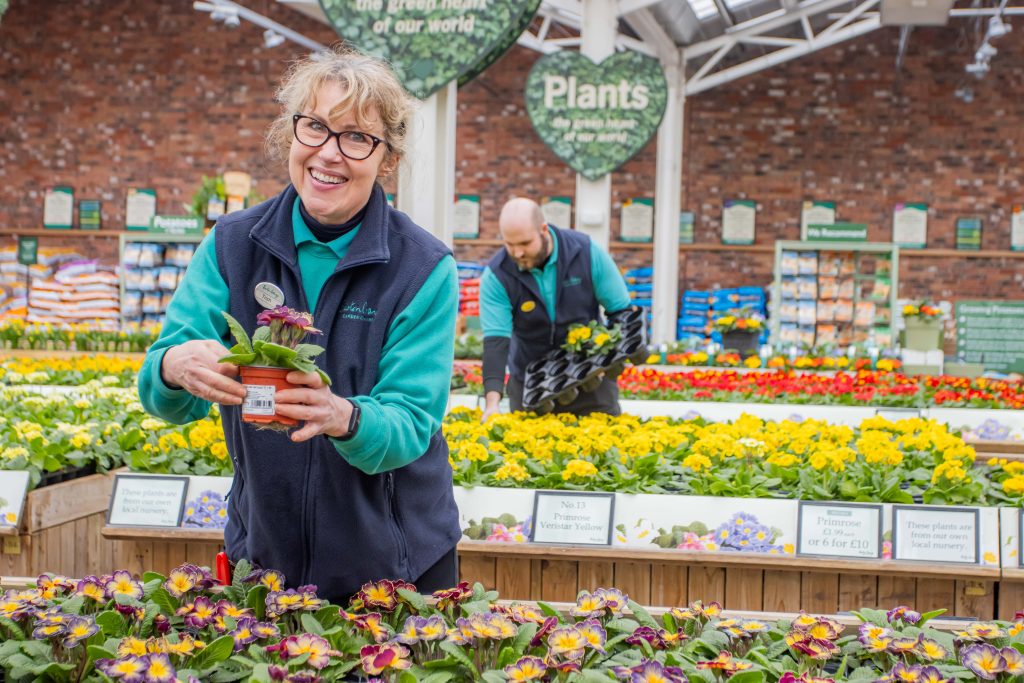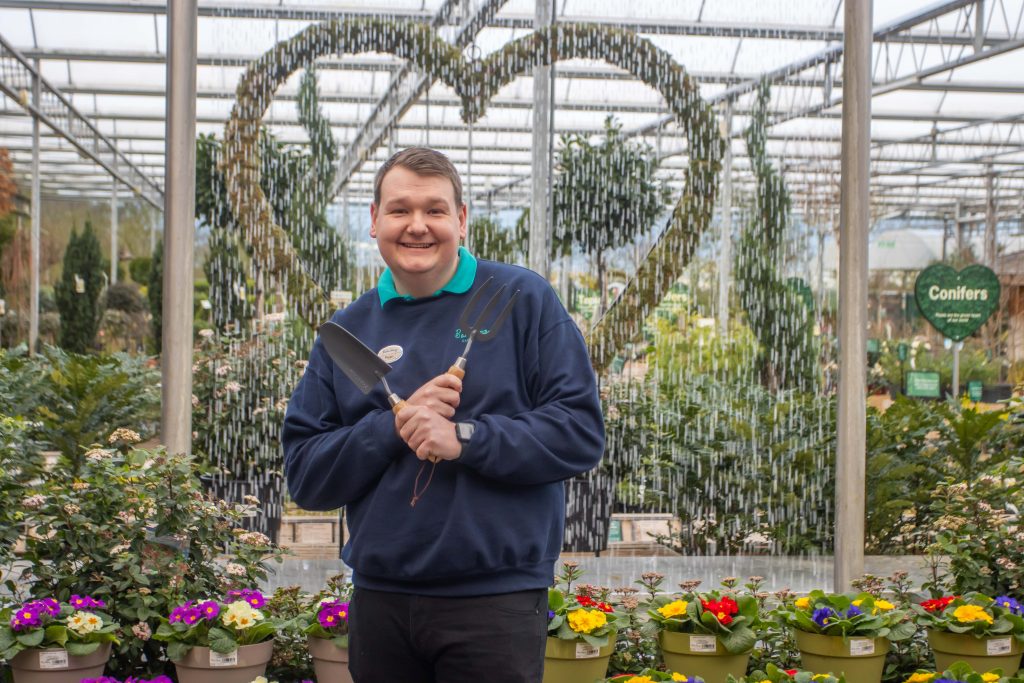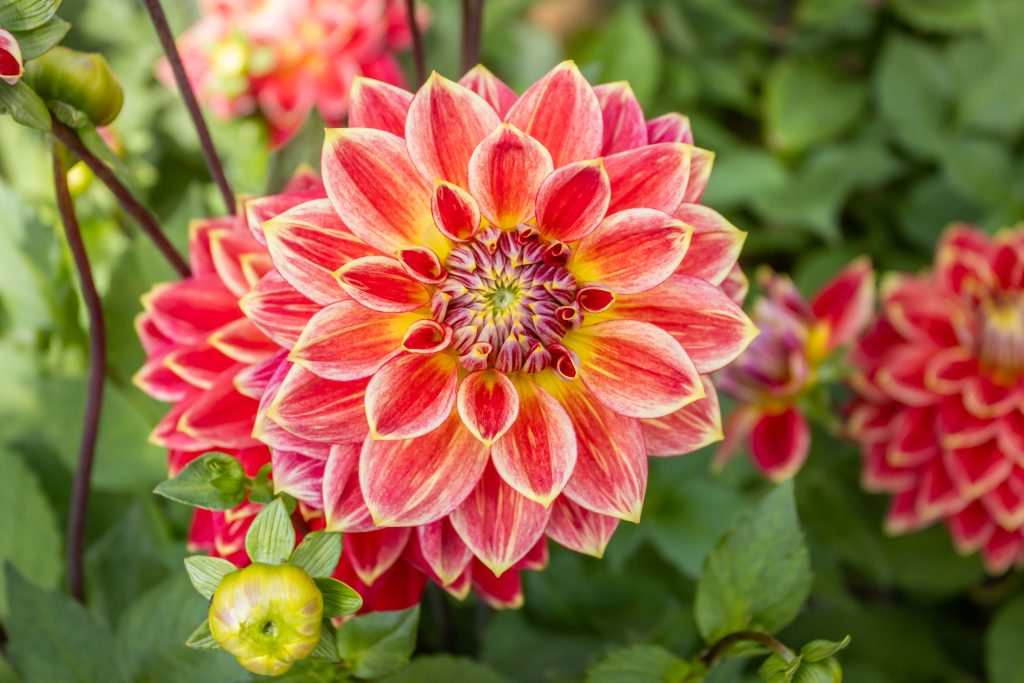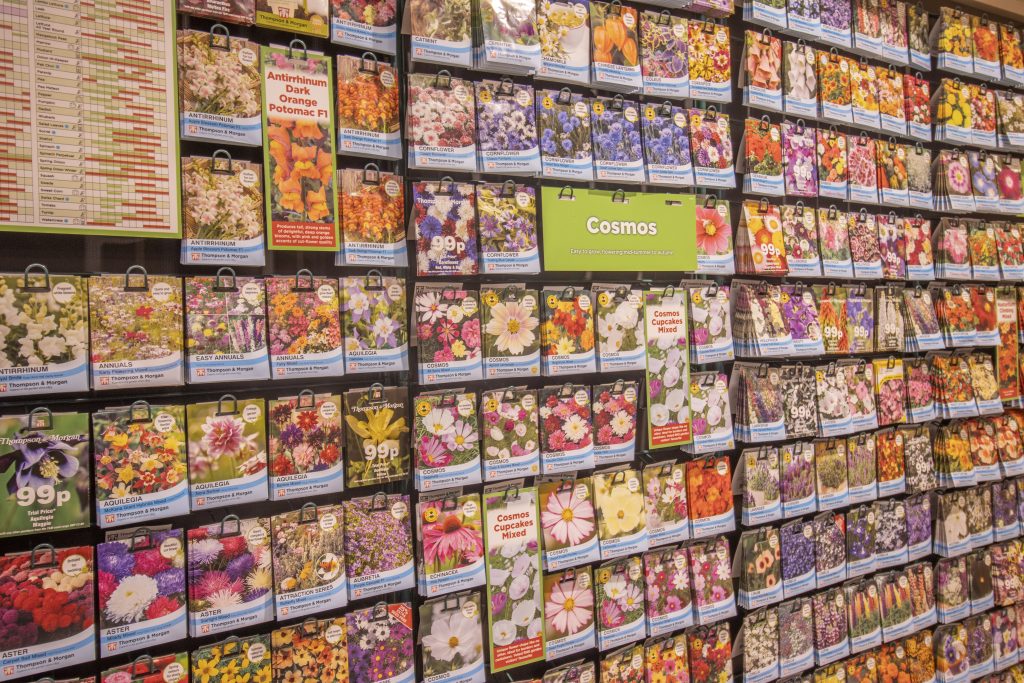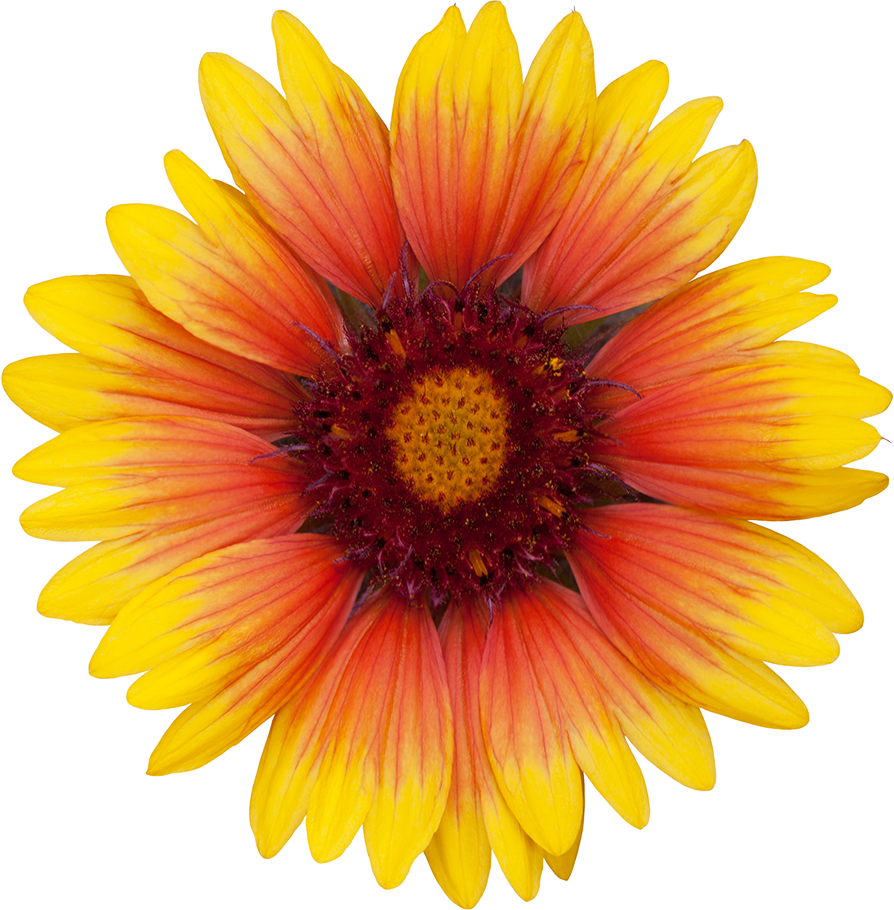Gardening Advice and Helpful Tips
Your gardening advice for August.
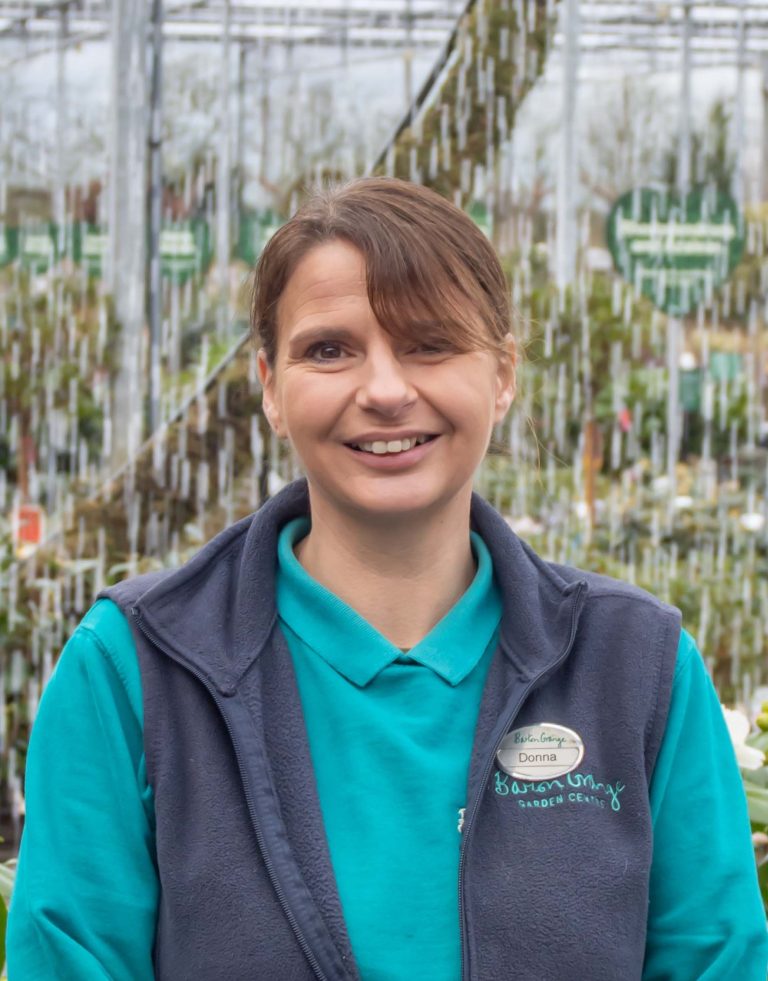
Donna Turner
Advice from Plant Area Supervisor
10 jobs to do in the month of August!
1. Blooming buddleias
Nothing attracts butterflies more than the buddleia plant. At this this time of year there are queues of butterflies trying to get to their nectar-rich flowers. Buddleias are easy to grow in almost any soil and will deliver a gorgeous splash of colour from late summer all the way through to autumn
2.Pots of gold
Plant up some containers now for a late summer glow up. There are plenty of late flowering varieties to choose from including gaillardias, begonias, salvias and dahlias. I like to combine a mixture of red, orange and yellow plants to reflect the shades of summer sliding into autumn.
3. Final Cut
Trim back your wisteria after it’s flowered in late summer to encourage new flowers and help control its growth. It’s not as complicated as you might think. Just cut the long whippy green shoots of this year’s growth back to five or six leaves and remove any dead wood.
4. Life is sweet
It’s important to deadhead your sweet peas regularly. Look out for seed pods developing and snip them off to prevent the plants forming seeds which will stop them producing more of their gorgeous fragranced flowers. If you can, try to do this every few days.
5. Lavender love
If your lavender has become twiggy and misshaped, your best bet is to take some cuttings or buy some new plants. Lavender rarely grows from old wood so if it looks like it’s on its last legs it probably is.
6. New arrivals
Just because August is the last month of summer doesn’t mean you can’t add some new plants to your garden. Marigolds are a great option and will continue to flower until the weather gets frosty. Black-eyed Susan plants will establish roots in the ground now and will hopefully come back next year, lasting from early summer to through to autumn.
7. Herb Garden
Cut back herbs such as chives, mint, basil and parsley, especially those that look a little tired. This will encourage new growth for a continued fresh supply of herbs for all your summer recipes. And don’t forget any herb leaves you cut can be dried or frozen.
8. Water features
As August is one of the hottest months of the year it’s time to keep an eye on water levels. Ponds and bird baths can dry out so much faster than usual so try to check levels at least twice a week so you can top them up.
9. Time to sow
Towards the end of the month, you can start planning next year’s colourful display by sowing your hardy annuals. Cornflowers, poppies, calendula and larkspur are some of my favourites. Remember sowing now allows for early flowering next spring.
10. Lawn care
During dry spells, it’s best to raise the blades on your lawnmower to allow the grass to grow a bit longer which will help to keep it greener and retain moisture. Don’t worry if the grass turns brown at this time of year as it will soon green up when the rain returns – which it will!
Feature plant: Rudbeckias
Rudbeckias are the stars of the late summer garden and will produce masses of golden daisy flowers from August to October. Also known as black-eyed Susan, they work especially well in prairie-style schemes paired with lots of ornamental grasses. Bees and butterflies love them too.
Top Rudbeckia tips
Rudbeckias like a fertile soil that holds plenty of moisture in spring and summer. Plant in full sun or dappled shade. They will tolerate some shade but the shadier the location the less they will flower.
It’s best to plant them out in spring or autumn when the soil is warm and moist. They need that warmth to encourage new root growth.
Soak the roots in water for 3-6 hours before planting out. Dig in plenty of compost when planting, especially if your soil is clay or sandy. Space plants 15-20cm apart.
Apply a generous amount of mulch in spring or after planting out annuals and feed with a liquid plant food every couple of weeks in the growing season to encourage bigger and better flowers.
The main risk to rudbeckias is slugs and snails who love to graze on the young growth in spring, so be vigilant and protect plants if necessary. Sprinkling grit, broken shells or something sharp at the base is a good organic option.
Rudbeckias produce an abundance of nectar and pollen which is why they are so popular with bees and butterflies. Their ability to self-seed makes them a great choice for wildflower gardens too.
Divide overcrowded plants every three to four years as the new growth begins in spring, lifting the plants and separating them into smaller clumps.
Donna will be back next month with her gardening advice for August so be sure to check it out next month!
More Advice?

Ruth McNamee
Greenhouse Senior
October on the Veg Plot...
October is a great month to get ahead in the veg patch, writes Ruth McNamee.
Choose a sunny sheltered spot to sow broad beans. The variety Aquadulce Claudia does well from autumn sowing. Sow a double row with seeds 20cm apart. These plants should germinate, stand over winter and quickly establish when the weather warms. The crop can be enjoyed a couple of weeks earlier than spring sown seeds.
You can start to plant out garlic this month 15cm apart in rows 30cm apart. This can be left to next month if preferred. And there is still time to plant out overwintering onions. Make a shallow drill and place the sets pointy end up 15cms apart in rows 30cms apart. Onions are ready to harvest early next summer. Try onion and garlic in big pots and keep in a sheltered spot for the best results.
October is a great month to get your permanent planting done. It’s a good time to establish your fruit and asparagus beds while the soil is still warm from the summer heat. Rhubarb and asparagus crowns will now be available in the garden centre. Prepare the beds by removing all weeds. These crops will be in these beds for many years so it helps to give them a good start.
May is the month where strawberries flower so mulch plants with straw.
Prune early flowering shrubs such as the Forsynthia and Weigela.
Direct sow basil next to tomato seedlings to help draw white fly away.
Veg seeds that can be sown outdoors include courgette, beetroot and sprouts.
Lift and divide your spring bulbs and plant where you want for next year.
Check all foliage for lily beetle and greenfly and dispose of any found.
Gardening Jobs for January
Buy seeds to be sown in January or February.
Buy seed potatoes, onion sets and garlic.
Appraise the garden for form and structure, and plan alterations and additions.
Plant window boxes and containers for seasonal colour.
Protect vulnerable plants from frost and wind damage.
Firm in any autumn-planted shrubs and border plants lifted by frost.
Knock snow off branches, especially on conifers and hedges, if they are bending under the weight.
Check stakes and ties on newly planted trees.
Remember the birds in the garden and put out food for them, especially when it’s frosty.

